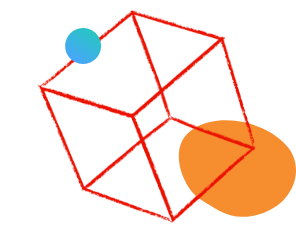due to @ChildResourceFromRequest my unit test cases are getting failed while writing unit testcases for AEM component
- Mark as New
- Follow
- Mute
- Subscribe to RSS Feed
- Permalink
- Report
hi , all my testcases are getting failed showing runtime exception if I am including @ChildResourceFromRequest in my model class .
Model class :
package comcore.models.components.content.collections.locations;
import com.adobe.acs.commons.models.injectors.annotation.ChildResourceFromRequest;
import com.core.configurations.GoogleMapAPIConfiguration;
import com.core.decorators.Validatable;
import com.core.models.components.ComponentModel;
import com.fasterxml.jackson.core.JsonProcessingException;
import com.fasterxml.jackson.databind.ObjectMapper;
import org.apache.commons.lang3.StringUtils;
import org.apache.sling.api.SlingHttpServletRequest;
import org.apache.sling.models.annotations.DefaultInjectionStrategy;
import org.apache.sling.models.annotations.Model;
import org.apache.sling.models.annotations.injectorspecific.ChildResource;
import org.apache.sling.models.annotations.injectorspecific.OSGiService;
import org.apache.sling.models.annotations.injectorspecific.ValueMapValue;
import org.slf4j.Logger;
import org.slf4j.LoggerFactory;
import javax.annotation.Nonnull;
import javax.annotation.PostConstruct;
import java.util.List;
import static java.util.Collections.emptyList;
@Model(
adaptables = SlingHttpServletRequest.class,
defaultInjectionStrategy = DefaultInjectionStrategy.OPTIONAL)
public class LocationsModel extends ComponentModel implements Validatable {
private static final Logger log = LoggerFactory.getLogger(LocationsModel.class);
private static final String CSS_CLASS_NAME = "locations";
@OSGiService
private GoogleMapAPIConfiguration mapAPIConfiguration;
@ValueMapValue
private String title;
@ValueMapValue
private int zoomLevel;
//@ChildResourceFromRequest
@ChildResource // USING THIS AS ALTERNATIVE BUT NOT SURE IF IT WILL CHANGE THE FUNCTIONALITY
private final List<LocationItem> locations = emptyList();
private String locationsJson;
private String key;
@PostConstruct
protected void init() {
if (mapAPIConfiguration != null) {
this.key = mapAPIConfiguration.getKey();
}
/* I NEED TO COMMENT THIS CODE IN ORDER AVOID ERROR
try {
this.locationsJson = new ObjectMapper().writeValueAsString(this.locations);
} catch (Exception ex) {
log.error("Unable to generate locations to JSON string", ex);
}
*/
}
@Nonnull
@Override
public String getCssClassName() {
return CSS_CLASS_NAME;
}
@Override
public boolean isValid() {
return StringUtils.isNotEmpty(this.key) && !this.locations.isEmpty();
}
public String getTitle() {
return this.title;
}
@Nonnull
public List<LocationItem> getLocations() {
return this.locations;
}
public String getLocationsJson() {
return this.locationsJson;
}
public int getZoomLevel() {
return this.zoomLevel;
}
public String getKey() {
return this.key;
}
}
can you tell me why @ChildResourceFromRequest is not working
Thank you
Solved! Go to Solution.
Views
Replies
Total Likes

- Mark as New
- Follow
- Mute
- Subscribe to RSS Feed
- Permalink
- Report
There is no difference in functionality, it is just direct adaption of child resource when adaptable is slingRequest.
a key difference in that it uses a mock request object pointed to the resource path as the adaptable, allowing the sling model to reference the request and other sling bindings not otherwise accessible when adapting a resource directly.

- Mark as New
- Follow
- Mute
- Subscribe to RSS Feed
- Permalink
- Report
Hi,
Could you share the details about @ChildResourceFromRequest annotations?
I am not able to find at sling official documentation
https://sling.apache.org/documentation/bundles/models.html#injector-specific-annotations-1
- Mark as New
- Follow
- Mute
- Subscribe to RSS Feed
- Permalink
- Report
upon clicking on @ChildResourceFromRequest i am getting :
package com.adobe.acs.commons.models.injectors.annotation;
import java.lang.annotation.ElementType;
import java.lang.annotation.Retention;
import java.lang.annotation.RetentionPolicy;
import java.lang.annotation.Target;
import org.apache.sling.models.annotations.Source;
import org.apache.sling.models.annotations.injectorspecific.InjectionStrategy;
import org.apache.sling.models.spi.injectorspecific.InjectAnnotation;
@Target({ElementType.METHOD, ElementType.FIELD, ElementType.PARAMETER})
@Retention(RetentionPolicy.RUNTIME)
@InjectAnnotation
@Source("child-resources-from-request")
public @interface ChildResourceFromRequest {
String name() default "";
/** @deprecated */
@Deprecated
boolean optional() default false;
InjectionStrategy injectionStrategy() default InjectionStrategy.DEFAULT;
String via() default "";
}

- Mark as New
- Follow
- Mute
- Subscribe to RSS Feed
- Permalink
- Report
Ahh ok, this is from ACS common,
you can check the details at https://adobe-consulting-services.github.io/acs-aem-commons/features/sling-model-injectors/child-res...
I think you can continue using @ChildResource
- Mark as New
- Follow
- Mute
- Subscribe to RSS Feed
- Permalink
- Report
will using @ChildResource instead of @ChildResourceFromRequest change any of my functionality?

- Mark as New
- Follow
- Mute
- Subscribe to RSS Feed
- Permalink
- Report
There is no difference in functionality, it is just direct adaption of child resource when adaptable is slingRequest.
a key difference in that it uses a mock request object pointed to the resource path as the adaptable, allowing the sling model to reference the request and other sling bindings not otherwise accessible when adapting a resource directly.
- Mark as New
- Follow
- Mute
- Subscribe to RSS Feed
- Permalink
- Report
@arunpatidar Is there any solution to this issue when using ChildResourceFromRequest?
Views
Replies
Total Likes
- Mark as New
- Follow
- Mute
- Subscribe to RSS Feed
- Permalink
- Report
This doesn't answer this initial question and the accepted solution doesn't neither.
I'm facing the same issue
*** UPDATE ***
I found the solution:
add this to your setup function (@BeforeEach) in the unit tests
context.registerInjectActivateService(new ChildResourceFromRequestAnnotationProcessorFactory());
context.registerInjectActivateService(new ChildResourceFromRequestInjector());
- Mark as New
- Follow
- Mute
- Subscribe to RSS Feed
- Permalink
- Report
Thanks for clarifying this, I will apply this same change then for any customer annotation that is used
Views
Replies
Total Likes
Views
Likes
Replies
Views
Likes
Replies



